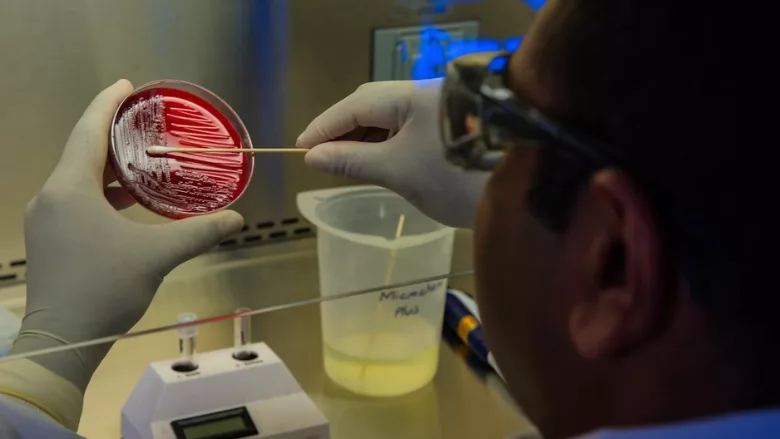FDA Environmental Monitoring Tactics Have Changed—Have Yours?

Credit: CDC (cdc) via Unsplash
We are people, and people have a specific nature, a predictable way of acting as individuals and as a species in general. Certain key attributes define our personalities and our humanity. We all laugh, we all cry, and one thing is for sure—we hate change. People will often continue actions that they know to be irrational long after they know they should change.
There is a plausible rationale for this attribute. In our distant past, change was not a good thing. It created risk, and our ancestors could easily become dinner for a snarling beast if they weren't careful. Knowing what to expect was crucial to survival. Surprises rarely turned out for the best in that world.
Pressure Forces a Change
Behaviors only change when they are forced to change. Something happens that causes a modification in that behavior. If a visit to a doctor brings us bad health news, we hopefully change our behavior. Pressure forces a change. If not, reality will catch up sooner or later.
We see this when we measure food safety effectiveness via the number of recalls in the market. The number of recalls is pretty much the same every year, as are the causes. We scratch our heads and ask why recalls don't go down, and we go back to what we were doing before, expecting different results.
An example of rapid change is when a company experiences a recall. The company will drop everything, focus on the issue, and move quickly to repair the damage. Resources become readily available, and everyone is aligned to the objective.
This is what is known as a step change. Change is not a gradual process, but is usually a quick reset to a new baseline behavior. We experienced this with the series of events that triggered Congress and President Obama to pass the Food Safety Modernization Act (FSMA).
Looking for quick answers on food safety topics?
Try Ask FSM, our new smart AI search tool.
Ask FSM →
Plant Environmental Monitoring Strategy
I would be willing to bet that your environmental monitoring program is pretty much the same as it was 20 years ago. It was written by a Quality Assurance Manager who left the company long ago. It is exactly the same map, the same microbial tests, performed at the same frequency with the same cleaning and vector analysis for positives. The program is based on an unchallenged rule that continues to this day: "Pathogens on food contact areas are flushed to the floor and drains during cleaning. Therefore, if you don't find them during sampling, then they aren't present in your plant."
The outcome of this unwritten rule from our past is that food contact surfaces and indirect contact surfaces, such as buttons on machines, are never tested. It worked then, and it is assumed to work now. After all, why fix what isn't broken?
Does it really work, though? The number of recalls seems to indicate otherwise. The data tells a different story. The same drains and floors are sampled at the same time every year. If a hit occurs, the area is cleaned, a vector analysis performed to find the source, and that's it. No analysis beyond basic microbial species identification is performed. Rinse and repeat.
To make matters worse, some Quality Manager job performance criteria contain an expectation that no positive samples are found during testing. The theory is that if you have a good sanitation program, you won't have any hits. This is an incentive that will get you exactly the result you expect. What is measured is managed. No positive environmental monitoring results are identified, and everyone is happy. It's a false sense of security.
Your plant environment is one of the leading causes of microbial contamination. What is on the floor will eventually make its way onto a food contact surface or into the food itself. It may take years, but if you leave it there, it will find its way there.
2022 FDA Investigations Operations Manual
Do you know what the Investigations Operations Manual1 is? If not, you need to read it. It's the standard for FDA field investigations. It explains how FDA investigators are taught to act, what to look for, and what to do when they find a noncompliance at a food facility. The latest version came out in June 2022, and it contains a section you need to be aware of when it comes to environmental monitoring.
Investigations Operations Manual Subchapter 4, "Environmental Sampling,"2 outlines the plan that FDA investigators use when they visit your site and have decided to take environmental samples. It is the exact opposite of what you are likely doing.
- They will not tell you that they are going to sample, until they are ready to start
- They are going to sample food contact and indirect contact surfaces
- They are not going to sample floors and drains
- They are going to sample during production, with a target of four hours of activity after a wet clean
- If a positive is found, they are sending it out for identification, adding it to the U.S. Centers for Disease Control and Prevention (CDC) database, and cross-referencing for any outstanding or past food safety incidents.
What do you have to show FDA for points of comparison? What data do you have in advance to look for issues in these areas? Why are you not doing this as well?
Change is Hard, but Necessary
FDA has made a major step change; you must study their approach and apply it to your operation. The reason to change is here, and you need to adapt. Throw out the old sampling plan and start with a clean slate.
Bring in experts to give you a fresh perspective. Set up a new sampling plan based on their advice. Revisit your sanitation verification testing, such as ATP. Test the system and perform sampling during production. Hold the product until the samples come back negative. If you do find something of concern, be grateful you found it first, and not FDA.
Does reading this last paragraph make you nervous, or maybe a little apprehensive? That is exactly why you need to do this. If we want to reduce recalls, we can't keep doing the same thing. We need to change. FDA understands this, and to their credit, they have acted. Don't wait for a major food safety catastrophe to drive change in your company—then it's too late.
Next Steps
First, read the Inspection Operations Manual. Links are provided in the References. Focus on section 4.3.7.7.1 regarding Environmental Sampling. It will open your eyes.
Second, send it to your boss to read, and set up a meeting to begin modification of your program.
Third, reach out to experts to help you with this process. You will get to the results you desire much faster.
Fourth, whatever you do, you need to act. Remember, FDA already has—now you need to, as well.
- FDA. Investigations Operations Manual 2022. September 8, 2022. https://www.fda.gov/inspections-compliance-enforcement-and-criminal-investigations/inspection-references/investigations-operations-manual.
- FDA. Investigations Operations Manual 2022. "Chapter 4: Sampling." September 8, 2022. https://www.fda.gov/media/75243/download.









